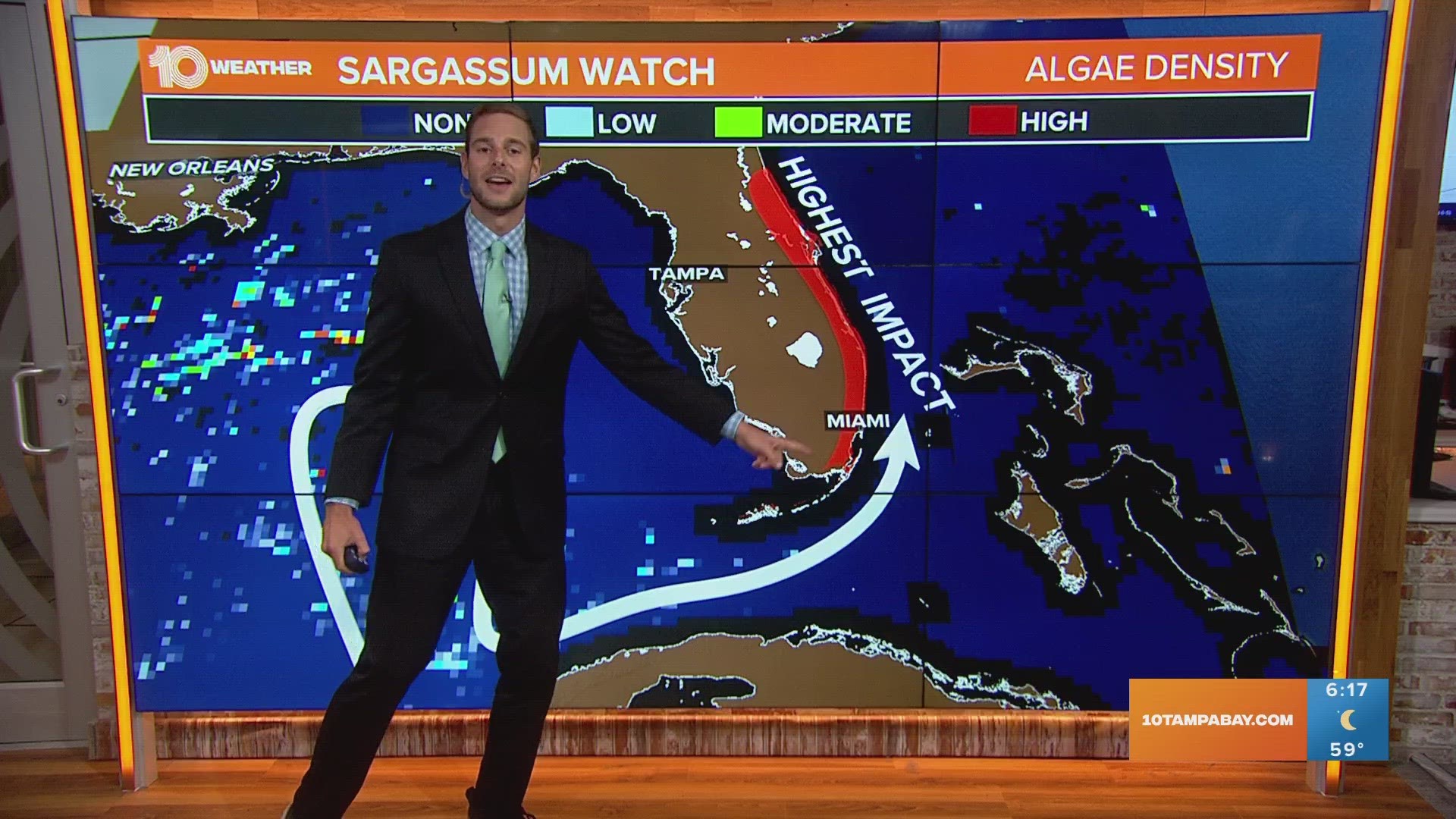COCOA BEACH, Fla. — Some Florida beachgoers might be holding their noses right now — reports of large amounts of stinky seaweed washing ashore on some of the state's beaches are coming in.
The clumps of brown seaweed, called Sargassum, are part of a massive bloom collecting in the Caribbean Sea spanning about 5,000 miles. It's forecast to become the largest-ever bloom recorded, University of South Florida marine scientists say.
Days ago, FOX 35 reported people visiting Cocoa Beach saw "piles" of the smelly seaweed during their trip. Typically, Florida's beaches along the East Coast bear the brunt of the yearly bloom when large mats wash ashore.
On TikTok and other social media, videos and photos of the invading stinky seaweed have been cropping up. One TikTok user, allthingsemeraldcoast, shared a video of what appears to be large clumps of the Sargassum on Pensacola Beach.
The text on the video reads, "Sargassum is starting to show up on Pensacola Beach 4/11/23 this year is the largest bloom in recorded history — I have a feeling it's about to get a lot worse." The caption only said one word — "Yikes!"
Here along the Gulf Coast and around the Tampa Bay area, the Sargassum bloom won't likely impact our beaches.
That's because the seaweed will follow the Gulf Stream current, which moves around Cuba, past the Florida Keys and then makes its way around Miami and the east coast of Florida. It's those beaches where the seaweed will likely wash ashore.
Why does this even matter? The Sargassum isn't harmful, according to the Florida Department of Health, and is actually an important habitat for certain animals that have adapted to rely on the floating algae, such as shrimp, crab, sea turtles and tuna.
However, when it dies by coastlines it can lower water quality and emits a rotten egg-like smell. This large amount of seaweed can often hamper beach tourism in the Caribbean Islands and have negative economic effects.
The health department does caution that the hydrogen sulfide gas — what's responsible for the rotten egg smell — can irritate the eyes, nose and throat. People who have asthma or other breathing illnesses could be more sensitive to the gas coming from the Sargassum which could result in some breathing troubles while inhaling the hydrogen sulfide.

